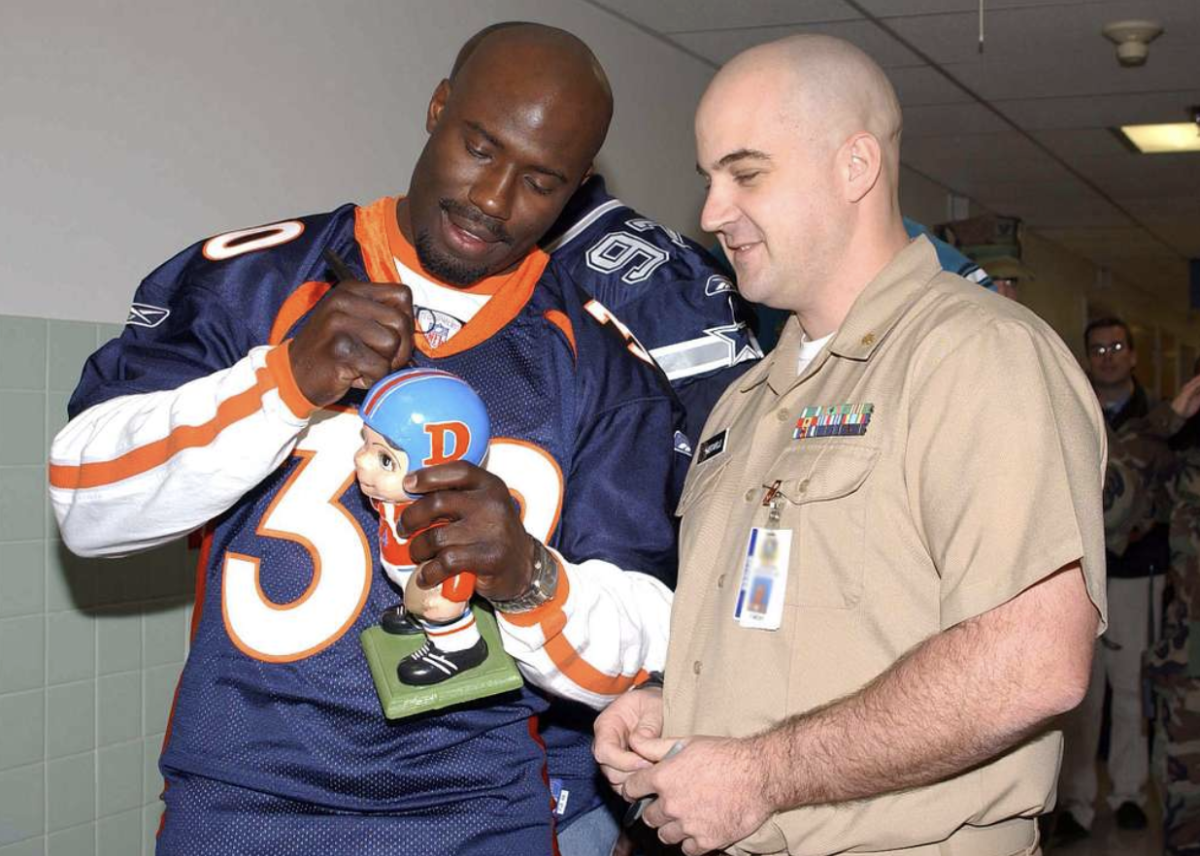“The more you put into football, you train, you prepare, the harder you play, then the better the results are going to be and that is true in life… you can’t think you’re going to be great at anything without putting work into it.”
Terrel Davis’ Hall of Fame speech is the mantra that a profusion of professional players have followed. Without it, they wouldn’t have made it past high school.
But even someone as acclaimed as Terrel Davis overestimated their ability to push themselves. Davis was known for pushing his limits when he trained and sustaining heavy workloads as well as running the ball in a way that placed excessive stress on his knees.
Davis’s career was cut short after numerous knee injuries siphoned his playing time and he only played 17 games over the course of his final three seasons. He’s an unfortunate example of how overtraining can cut your career short.
Losing a playmaker is detrimental to a team’s success which is why proper recovery and training techniques have become so essential, especially when it impacts the players’ long-term health.
Highlands PE (also sports medicine and personal fitness) teacher Jill Taylor believes overtraining can be detrimental to an athlete’s success.
“Overtraining can lead to overuse injuries. The body needs time to heal and recover from a workout/training session. Not allowing recovery time can lead to players being injured because their bodies are not in peak performance condition.”
Overtraining also isn’t beneficial to an athlete’s gains in the weight room because when one pushes a muscle past failure (the idea of pushing a muscle/muscle group past the point of exhaustion), it often stops producing results during that lift. This leads to unnecessary stress on the tendons and ligaments and leads to injury.
The “king of all workouts”: the barbell squat, happens to be more harmful than many realize. The squat has been regarded as one of the best workouts for athletes looking to build explosiveness. Squats target the quadriceps (the anterior muscle group of the leg), the hamstrings (the posterior muscle of the leg), and the glutes.
It’s true that squats are one of the best workouts for generating athleticism but they place stress on the ligaments of the knee, especially for somebody with longer femurs which many NFL and college players have.
The landmine squat is a criminally underrated alternative to the squat and is much safer. The knees sustain less stress and the explosive benefits remain nearly the same. Landmine squats also don’t require a spotter and there is less risk of injury when performing the lift.
Common barbell squat injuries are muscular tears, strain on the legs/knees/hip/groin/back, knee sprains, and herniated discs (back).
Of course, lifting technique is essential for preventing injuries and every NFL and NCAA strength and conditioning coach should thoroughly be able to demonstrate proper form and ensure that athletes maintain said form.
But in many cases, notably at the high school level, coaches will negligently allow their players to lift heavier loads than their body is capable of. This can create cool weight room videos but provides little benefit athletically if any at all.
“Using improper techniques for lifting is dangerous and can lead to both traumatic and overuse injuries. Poor posture, improper form, progressing too quickly, and not using a spotter are all factors that can increase your chances of injury on the field.” Taylor added.
Although athletes shouldn’t extensively lift more than they’re capable of handling, progressively increasing the weight slightly past one’s comfort zone is pivotal in gaining strength, albeit as long as the exercise doesn’t place a major strain on the tendons and ligaments of the extremities.




